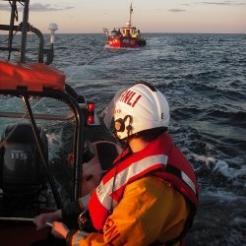The fate of a planned boat-building and maintenance facility that could save the RNLI £3.7m a year is in the hands of planners as the charity submits its proposals to the local authority today.
The £11.2m plan involves bringing the RNLI’s entire lifeboat production process under one roof at the Lifeboat Maintenance Depot in Poole, Dorset beside the RNLI's headquarters.
RNLI is hoping that the Borough of Poole’s planning committee approves the scheme, which would be built on land that the charity already owns.
It would mean removing the seven lifeboat maintenance buildings, workshops and offices on the site and constructing two new structures in their place, large enough to build all the lifeboats.
The mooted £3.7m annual saving is equivalent to the cost of two and a half ‘Shannon’ class lifeboats, which RNLI describes as ‘the next generation of lifeboats’. RNLI claims that as well as the saving, the new facility would develop the skills of its existing workforce and create 90 new jobs between 2014 and 2019. This time last year, RNLI announced it was making 41 of its employees redundant.
“We will be our own customer in control of our own destiny, with complete control of the lifesaving process,” the charity said of the plan. “We will apply our continuous improvement efficiency programme to every stage of our lifeboat building, ensuring that we are investing our supporters’ money wisely, and achieving the best possible return on their investment.
“All operations previously carried out on the site (lifeboat maintenance) have been temporarily relocated, and will be phased back in once the project is complete.”
If the Borough of Poole’s planning committee gives approval to the scheme, RNLI says that the first phase of operations at the facility is scheduled to begin in spring 2014, including the all-weather lifeboat refit and overhaul bays and equipment.
The actual building of the facility is scheduled to start this summer, for completion in spring 2014, when work would then gradually return to the site between 2014 and 2019, with the site fully operational in 2019.









